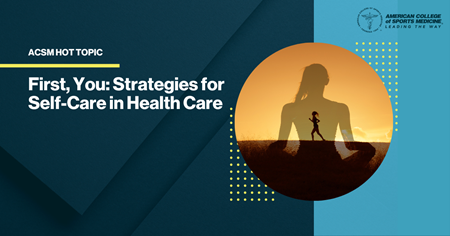by
Greg Margason
| May 23, 2023

“Painful feelings are, by their very nature, temporary. They will weaken over time as long as we don’t prolong or amplify them through resistance or avoidance. The only way to eventually free ourselves from debilitating pain, therefore, is to be with it as it is. The only way out is through.”
― Kristin Neff, Self-Compassion: The Proven Power of Being Kind to Yourself
If you’re naturally drawn to caregiving, there’s a chance you’re so focused on others that you don’t spend enough time supporting your own well-being. But your ability to provide the best education, care and coaching to those that you support is contingent upon your state of well-being, both internal and external.
Here are four strategies for an uplift!
Consider the good
Getting to where you want begins with knowing your starting line. One place to begin is through a simple Well-Being Inventory, which gives you the opportunity to reflect on four key areas: mind, body, life and work. Taking an inventory like this enables you celebrate and savor the areas where you are doing well. We tend to be hyper-focused on improvement, gaps and growth while ignoring what is already in place, good and growing. For example, you may score an 8/10 on “I feel confident that I can accomplish what I set out to do.” Don’t just skip over this good news to focus on the lower scores.
Ask yourself, “What makes me feel proud of this? What are the strengths that I use to accomplish things? Why is this good thing happening for me?”
You aren’t alone
Anxiety, fear and a feeling of being overwhelmed can sometimes lead us to isolate, which only exacerbates those unpleasant emotions. Here’s the good news: Emotions are universal. We all experience some iteration of anger, surprise, disgust, enjoyment, fear and sadness. There is also some evidence of a seventh universal emotion — contempt. (Perhaps something or someone immediately sprung to mind with that one!) Even if someone else isn’t going through the exact same situation as you, they can empathize with the emotion you’re experiencing. Talking about it will reduce the intensity of the negativity. Check out Paul Eckman’s work on emotions and expand your vocabulary for talking about emotions with the Atlas of Emotions.
Ask yourself, “What is the exact emotion I am experiencing and why? Who could I trust to talk about the emotion with? What do I want from the person I share it with: listening, empathy or solutions?”
Be kind
It is so important to be kind to ourselves when we haven’t been successful or when we are feeling unpleasant emotions. Instead of adding onto the pain with criticism, flip the script to express compassion toward yourself and allow yourself to notice your emotions. From “You are weak,” shift to “You may not be ready for this yet”; from “You shouldn’t feel this way,” shift to “I wonder why I am feeling this way”; or from “Just another failure, go figure!” shift to “You keep trying hard things, that’s pretty amazing!” You might also consider a
self-compassion meditation from compassion expert Kristin Neff.
Ask yourself, “What do I need right now? What is my body trying to communicate? What is the most kind thing I could do, or say to myself, in this moment?”
Get real
This might feel like a tough one. It’s helpful to pause and consider what is fact and what is perception in the situation that is creating anger, surprise, disgust, fear, sadness or contempt. Sometimes we have emotional reflexes based on our past (conflicts and pain from long ago) that jump right back into action at the first sign of danger. They are deeply rooted reflexes, a learned pessimism, that may have served us then by may not be now. Give yourself permission to argue against those negative emotions.
Ask yourself, “To what extent might I be exaggerating the circumstances? Is there evidence for what I believe is true? Are there alternative perspectives? Is this emotion really helping me?”
 Erika Jackson, M.A., MCC, NBC-HWC is the Chief Coaching Officer for Wellcoaches Corporation, leading the development of training and curriculum to build excellent skills for thousands of coaches around the world. After earning a Master’s Degree focused on Human Resources and adult learning, she led training organizations in Fortune 500 and governmental organizations. With thousands of hours of coaching experience, Erika is a Master Certified Coach and a National Board Certified Coach. She is also a mentor coach and examiner for the International Coach Federation (ICF), serves on the Program Approval Commission for the National Board for Health and Wellness Coaching (NBHWC) and is the Chair of the Health and Wellness Coaching Member Interest Group for the American College of Lifestyle Medicine (ACLM). In addition to her contributions to coaching research, she is co-author of the peer-reviewed Coaching Psychology Manual published by Wolters Kluwer as well as the Behavior Change component of the ACLM Board Review Course.
Erika Jackson, M.A., MCC, NBC-HWC is the Chief Coaching Officer for Wellcoaches Corporation, leading the development of training and curriculum to build excellent skills for thousands of coaches around the world. After earning a Master’s Degree focused on Human Resources and adult learning, she led training organizations in Fortune 500 and governmental organizations. With thousands of hours of coaching experience, Erika is a Master Certified Coach and a National Board Certified Coach. She is also a mentor coach and examiner for the International Coach Federation (ICF), serves on the Program Approval Commission for the National Board for Health and Wellness Coaching (NBHWC) and is the Chair of the Health and Wellness Coaching Member Interest Group for the American College of Lifestyle Medicine (ACLM). In addition to her contributions to coaching research, she is co-author of the peer-reviewed Coaching Psychology Manual published by Wolters Kluwer as well as the Behavior Change component of the ACLM Board Review Course.